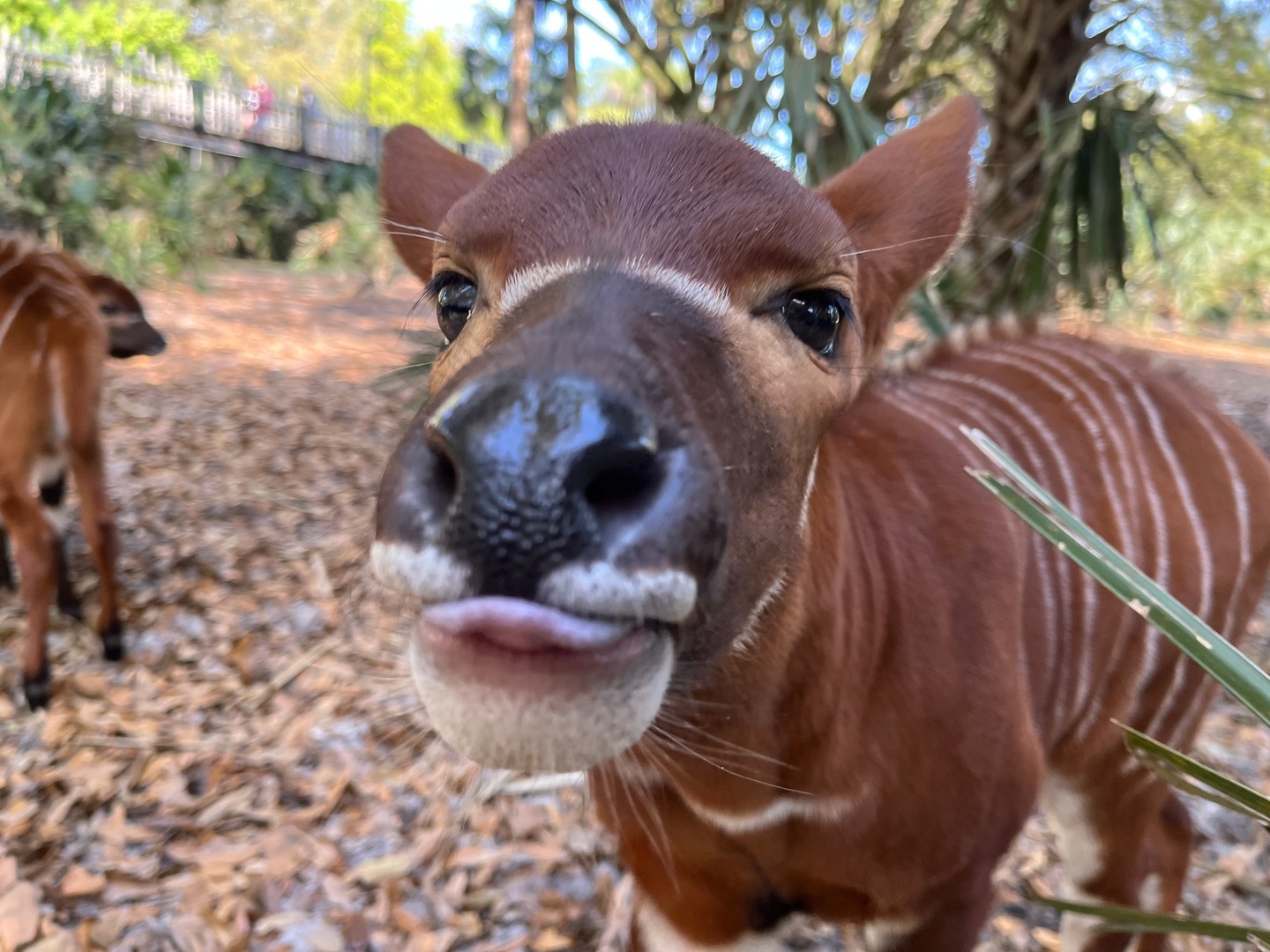- The significance of "Tongue Out Tuesday" as a social media trend and its role in animal engagement.
- An introduction to Pico, the bongo calf, and the importance of bongo antelope conservation.
- The anatomy and functions of the tongue in bongos and other wildlife, highlighting its role in behavior and survival.
- The challenges and strategies in zoo management and wildlife conservation for bongos and similar species.
- The contribution of zoos and wildlife sanctuaries to biodiversity conservation and the education of the public.
Each Tuesday, social media platforms light up with imagery known as "Tongue Out Tuesday." This light-hearted phenomena encourages individuals and organizations to post photos featuring tongues, often exhibiting their intriguing and comedic aspects. It’s a delightful fusion of humor and affection towards animals, aiming to boost engagement and awareness on various media platforms. This week, "Tongue Out Tuesday" is represented by a charming ambassador, Pico the bongo calf. Through Pico’s fascinating zoological details, we can explore broader topics, including wildlife conservation, zoo management, anatomical adaptations of the tongue, and the critical need for educational outreach in preserving biodiversity.
Pico the bongo calf is not merely a fun representation but also an emblematic reminder of species facing threats in their natural habitat. Bongos are large forest antelopes native to Africa, specifically the rainforests of Central and West Africa. The Western, or Lowland, bongos are categorized as Near Threatened by the International Union for Conservation of Nature (IUCN). The Eastern, or Mountain, bongo, categorized as Critically Endangered, faces a precarious future with fewer than a hundred individuals believed to remain in the wild. Human activities such as deforestation, poaching, and the encroachment of agriculture into forested areas have significantly diminished their populations.
Understanding the anatomy of these magnificent creatures provides insight into their day-to-day survival strategies. The tongue, in particular, is a versatile tool that facilitates feeding and grooming. Bongos, like many ruminants, possess a prehensile tongue that allows them to deftly grasp foliage and shoots. This adaptation is crucial for sustaining their herbivorous diet within dense forest environments where competition for food can be intense. The lifestyle of bongos, characterized by their elusive nature and reliance on the understory of forests, demands such specialization.
Zoo management plays a vital role in the preservation of bongos and biodiversity at large. Zoos serve as custodians for endangered species, providing them with a sanctuary where they can live safely and contribute to breeding programs. Captive breeding within zoos is often meticulously planned to maintain genetic diversity and healthy populations. Additionally, zoos everywhere act as educational hubs, enlightening the public about species conservation and the global importance of maintaining biodiversity. They strive to recreate natural habitats to the best of their ability, ensuring the well-being of their inhabitants. Zoos also facilitate important scientific research, offering insights into animal behavior, dietary needs, and health management that can be transferred to wild populations.
Wildlife conservation efforts extend beyond the confines of zoos. Organizations worldwide collaborate to establish wildlife sanctuaries and protected areas aiming to safeguard the natural habitats of endangered species like the bongo. These efforts include rigorous anti-poaching measures and community-based conservation strategies involving local and indigenous populations. Involving local communities is crucial because it fosters a sense of stewardship and offers economic incentives tied to the conservation of biodiversity.
Public engagement is another pillar in the conservation agenda. In recent years, the power of social media cannot be overlooked in its ability to spread awareness and foster positive environmental attitudes. Initiatives like "Tongue Out Tuesday" encourage involvement and raise the profile of species that might otherwise remain obscure. Participating in these trends offers a compelling opportunity for spreading messages about the importance of wildlife conservation.
In summary, "Tongue Out Tuesday," as embodied by Pico the bongo calf, serves not only as a platform for animal appreciation but also as a reminder of the fragility of ecosystems and the need for ongoing effort in species conservation. Through public engagement, scientific research, and dedicated management by zoos and conservation organizations, we can work to preserve our planet’s biodiversity. Ensuring that charming creatures like Pico continue to exist and thrive is a shared responsibility, one that hinges on the collective actions of organizations and individuals alike.
*****
Source Description
Tongue Out Tuesday brought to you today by Pico the bongo calf!😋


